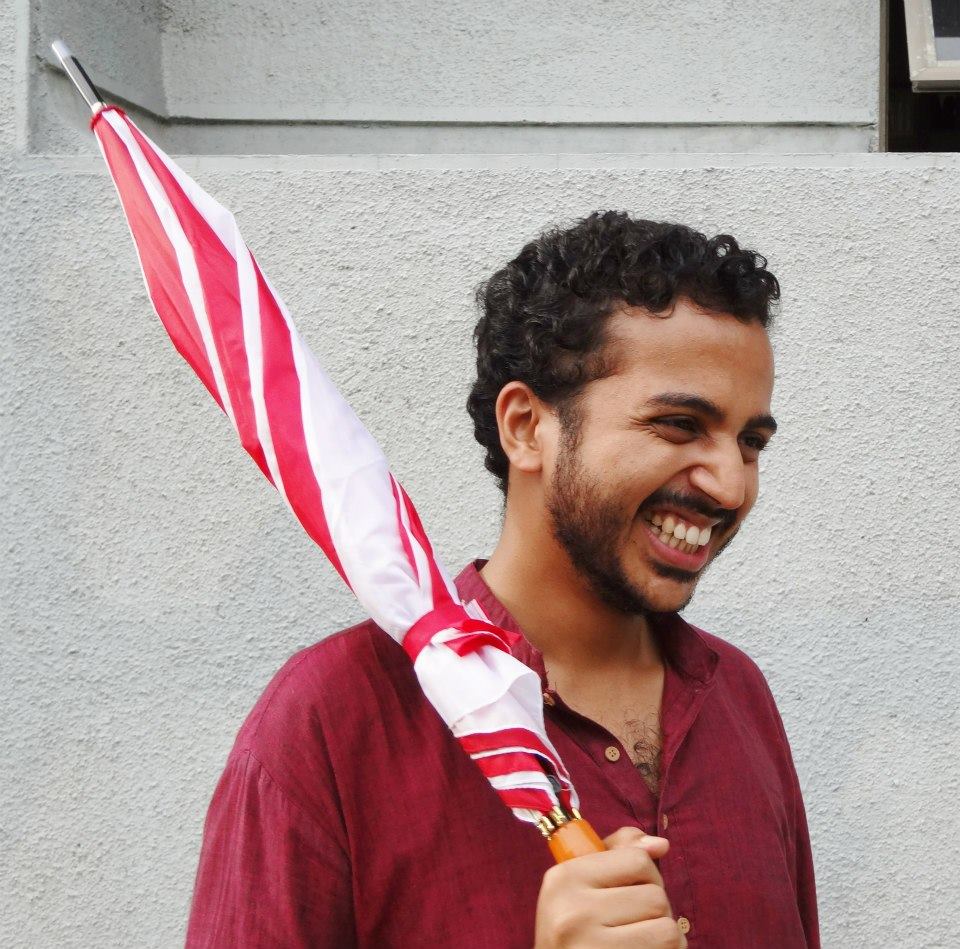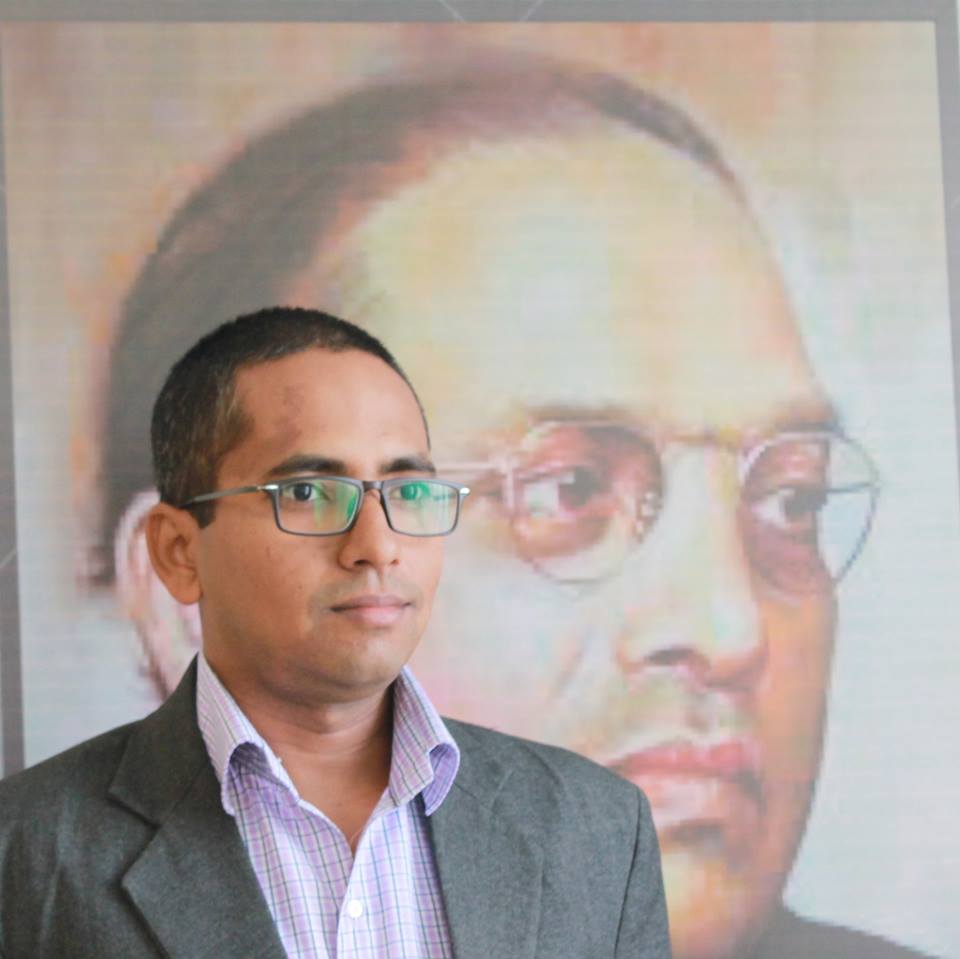Nidhin Shobhana
 For many days now, I have been grappling with a strong sense of unrest within me. I am thankful to the recent debates on Arundhati Roy and her mighty long introduction to ‘S. Anand’s critically annotated Annihilation of Caste’ which inspired me to finally ventilate this unrest. Oops! I forgot to mention the real author’s name, Dr. Babasaheb Ambedkar. This is what big names like ‘Arundhati Roy’ do to you… you miss the real author’s name!
For many days now, I have been grappling with a strong sense of unrest within me. I am thankful to the recent debates on Arundhati Roy and her mighty long introduction to ‘S. Anand’s critically annotated Annihilation of Caste’ which inspired me to finally ventilate this unrest. Oops! I forgot to mention the real author’s name, Dr. Babasaheb Ambedkar. This is what big names like ‘Arundhati Roy’ do to you… you miss the real author’s name!
Having acknowledged the inspiration, I would like to make it clear that this article is not about Arundhati Roy. It’s addressed to my Syrian Christian Brethren. It’s lovingly addressed to those Nazranis who strongly feel that they should write about caste and ‘annihilate caste’.
Let’s start with an informed recognition of where does one come from in this caste society. A closer look at the Syrian Christian community exposes caste, at least at three levels. Firstly, there is a caste hierarchy which operates within them. Secondly, they place themselves at the top of, what I call the ‘Christian Caste Hierarchy’. Now this is very clear, when we converse with them. A repeated mention of their Brahmin origins will often decorate the conversation. In fact, economically well-to-do, aging Syrian Christians, will document such farfetched connections in their autobiographies. One such little known Malayalam autobiography is of a deceased communist leader from my home district, Wayanad. In his autobiography, titled ‘From Cross to Sickle’ he talks about the revolutionary transformations in his life, as the title suggests. However, in the first three chapters, he painstakingly pulls the Brahmin thread from his ancestry. I often wonder what would have been his thoughts about the ‘other’ Christian denominations, emerging from Dalit-Bahujan experiences. Thirdly, in the general schema of caste they have been the chauffeurs of the Master Brahmins. They have operated as an important link which connects Savarna pride with Avarna oppression. In this process, they have constructed their own pride which stands shamelessly on the avarna’s toil. Now, in my limited knowledge, I have come across very few academic endeavors which talk directly about these caste ladders. It’s indeed significant to state at this juncture that a rigorous Ambedkarite analysis and historiography of this powerful group is yet to come. However, when we read between the lines, we see the caste devil smiling sweetly.
The academic literature produced on Syrian Christians can be broadly classified into two groups. The first group claims to be engaged in passionate anthropological research, somewhat like the early ethnographers and orientalists. Under the garb of ‘research for research sake’ they sanction and sanctify racist and casteist explanations of their existence. They sound apolitical. But do not get carried away so soon. By not talking about caste aesthetics, conflicts, oppression and slavery they uphold a unique identity which inspires awe. The second group very clearly has a conservationist approach. They would like to ‘preserve’ this caste in all its colours. And while doing so they would make dangerous connections. For example, in a Malayalam book I read recently, the author connects Syrian Christians with Kashmiri Pandits, Patels of Gujarat, Tamil Brahmins; Chitpavan Brahmins so on and so forth. His argument clearly states that all these groups have Jewish ancestry and have historically been arms of the ruling castes and classes. Now, can it get more interesting! In yet another book titled ‘Syrian Christians: Many faces, One Tradition’ the author proudly states that Syrian Christians are ‘Christians by Faith; Hindus by Culture and Oriental in their worship’.

Poykayil Johannan, or Poikayil Appachan, who first rebelled against caste in the church
Let’s also remember that this community has the highest land ownership in the state of Kerala. Scholars like Sunny Kappikad, K.K. Kochu, Prof. Sanal Mohan and Prof. Kunhaman have written about the material abundance of this community.
Historically, this caste group which developed into one of the major business bania castes in Kerala eventually displaced the Buddhist and Jain traders who were challenging the Brahmanical Order. Under the happy patronage of the Master Brahmins this group enjoyed many privileges. There is evidence to prove that they had their own caste armies, they were given powers to control, exploit and violate many ‘lower castes’, slave castes who served them. They were given greater spatial liberties. The knowledge of world trade and control over the cultivation and trade of cash crops proved to be a boon for this community. Christianity never witnessed a radical egalitarian interpretation in this community. It was only when Christianity came in contact with slave castes and Dalits that the liberatory possibilities of the faith were actualized.
Having said that, I would argue, that the process of ‘writing caste’ for Syrian Christians should start with a detailed recovery of their own histories from anti-caste perspectives. This means that they should ask the following questions – (a) Beyond simply mentioning one’s caste location, what does being a Syrian Christian mean? It’s important to nail down and expose the identity politics of the powerful (b) How does one talk about one’s privileges and hatred? (c) What are the contemporary manifestations of Syrian Christian racism and casteism? (d) How does one ‘own’ the dehumanizing privileges of caste? (e) How does one link the everyday of ‘Syrian Christianhood’ with communities who are situated above and below them in the caste hierarchy? (f) How does one forge dialogues which threaten one’s caste pride? I am sure my Syrian Christian sisters and brothers would add many more questions.
If this does not happen, and if Syrian Christians choose to be like the ‘lengthy introducer’ whom I mentioned in the beginning, they would keep repeating their caste-ordained role. In the introduction, a Christian Bania talks about a Hindu Bania under the pretext of introducing Dr. Babasaheb Ambedkar. In Kerala, till a few years back, if grains and oil were to be brought to a Namboothiri household by the lower castes, it had to travel through the Syrian Christian household. The traditional role of purification continues in the case of this introduction. An upper caste audience can consume a self-sufficient radical text only when a Syrian Christian performs the caste ordained purification ritual. Since they have the knowledge of world trade they would even market the text. This process is dangerous.
If the images of caste continue in new forms, it would hurt all of us. If the Syrian Christian, armed with words, is waiting for the ‘Dalit Revolution’ so that she can encash it, we need to be very careful and alert to expose her. For them, ‘Dalit’ becomes an all encompassing catchword to understand caste. This should be challenged. The urge to constantly evaluate dalits, their universal literature and their democratic social movements should be seen as an ‘upper-caste indulgence’. It should be ‘engagement’ and not ‘evaluation’. This engagement should compulsorily implicate you in the text. What is required is, borrowing from bell hooks, a process of ‘self-actualization’; an ‘anti-caste self actualization’ which threatens and destroys us, in an attempt to reshape us. It’s my earnest request to all Syrian Christians and their friends to breathe freely and open their own rooms and clean up the dirt. This work would be historic!
~
Please also read other articles on a related issue:
The Not-So-Intimate Enemy: The Loss and Erasure of the Self Under Casteism: by Gee Imaan Semmalar
Flaunting noble intentions, nurturing caste privileges: by Asha Kowtal
The Question of Free Speech: by Vaibhav Wasnik
Arundhati Roy replies to Dalit Camera
An Open Letter to Ms. Arundhati Roy: by Dalit Camera
Vedic Chants for the 21st Century
Arundhati Roy’s ‘Introduction’ to Ambedkar: Inside one Misogynistic & Xenophobic Dalit’s mind: by Anoop Kumar
The Judge, the Jury and the Goddess: by Akshay Pathak
Resisting a messiah: by Anoop Kumar
An Introduction to Anoop Kumar’s “Misogynistic and Xenophobic Rants”: by Vinay Bhat
~~~
Nidhin Shobhana works with Krantijyoti Savitribai Phule Women’s Studies Centre, Dnyanjyoti Savitribai Phule University, Pune.
Image Courtesy: Tasveer Ghar.










